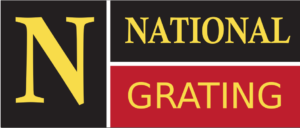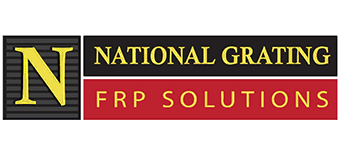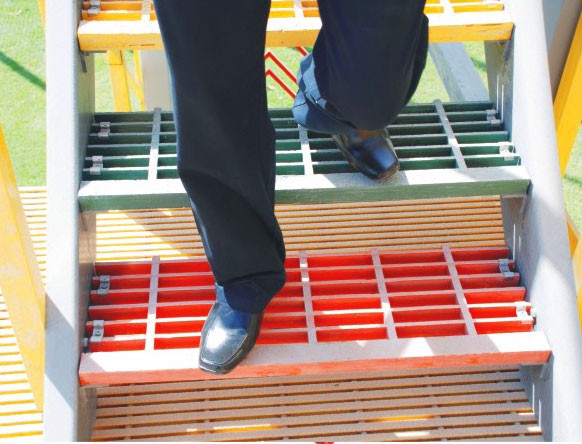Architectural Fiberglass / FRP Products Make Building Green Easy
Fiber Reinforced Polymer (FRP) materials are proving to be an excellent resource in building green energy-efficient buildings. The total output of energy should be calculated as the ongoing costs to heat and cool buildings, and also the energy required to manufacture, transport and construct the structure. The long service lifetime of FRP building materials significantly reduces maintenance and replacement costs and energy consumption related to those repairs and replacements through the years of service of your structure.
Here are some ways that building green with FRP materials reduces your energy footprint:
- Longer lasting materials require fewer resources for replacement.
- Reduced maintenance and repair costs.
- Lightweight panels use 90% less material than precast
- Lightweight panel reduces fuel and costs of transportation
- Unique manufacturing process applies color in the factory and delivers a quality finish, virtually eliminating VOCs during exterior painting.
- Architectural Fiberglass is hurricane and earthquake resistant. It can be installed to achieve MIAMI-DADE Large and Small Missile Impact Rating and be class A fire rated.
- The low thermal conductivity of fiberglass reduces energy consumption for heating and cooling.
Building green? We will help you select the right material at the best price.
What leading planners say about fiberglass (FRP) as a green building material
The City of Portland Office of Sustainable Development maintains a “G Rated” website intended to be “the gateway to green building innovation, offering initial consultation and current information specific to individual green projects. The G/Rated program is designed to speed the adoption of cost effective green building practices as the standard of development in Portland.
On the green building website, the City of Portland Office of Sustainable Development says about fiberglass: “frames made of fiberglass look like wood but are maintenance free and durable. Fiberglass resists moisture, corrosion and weathering by sunlight, without the need for paint or coatings. It is unaffected by mild acids, salt sprays, will not give off toxic fumes in fires, and will not oxidize. In addition, it holds its shape permanently and will not warp, shrink, dent, sag, or bow.”
“Fiberglass has better thermal integrity…it minimizes heat loss in winter and heat gain in summer.”
“Fiberglass has excellent dimensional stability through all types of weather.”

Green building with FRP panels, beams, angle and columns – National Grating provides durable, cost-effective fiberglass materials to construct energy-efficient industrial structures.
FRP and LEED Rating System Calculations
FRP (Fiber Reinforced Polymer) can give a great return on investment because it is lightweight (4x lighter than steel). The Leadership in Energy Efficient Design (LEED) rating system is used to calculate overall energy efficiency in a new building. Using FRP will contribute to LEED points in terms of energy performance (product is thermally non-conductive) and does not oxidize or corrode.
In addition to the benefits toward LEED® certification, FRP does not leach toxins in wet applications. This environmentally safe alternative to heavier, rust-prone steel structures is also very easy to install, requiring less heavy equipment.
Looking for the material with the specs you need? Whenever you are building green, we have the right FRP products for your LEED project.
Bulk and Wholesale Discounts Available on Large Orders

 Fast Delivery via our Superior Logistics Network
Fast Delivery via our Superior Logistics Network
National Grating provides environmentally friendly fiberglass grating, fiberglass tube, fiberglass angle and hardware to ALL USA States including California, Oregon, Alaska, Florida, New York, Illinois, Pennsylvania, Ohio, Georgia, Michigan, Virginia, Massachusetts, Arizona, Washington, North Carolina, Nevada, Texas, New Mexico, Indiana, Tennessee, Colorado, Maryland, Missouri, Wisconsin and Utah. Our pricing and service experts are standing by to help to find the best product for your green building project. With many varieties in stock and expedited shipping, we can supply your LEED-certified building project with fiberglass grating at the best price.

 Fiberglass Grating Radio Frequency Transparency
Fiberglass Grating Radio Frequency Transparency
In today’s connected world, we depend on cellular telephone signals, Wi-Fi networks and over the air radio and television signals. Wi-Fi and Bluetooth connectivity are essential to on-site work environments. Steel structures significantly disrupt these signals. Fiberglass structures and grating are an essential part of green building structures that are “electronically transparent” and do not interfere with radio frequency transmissions.










